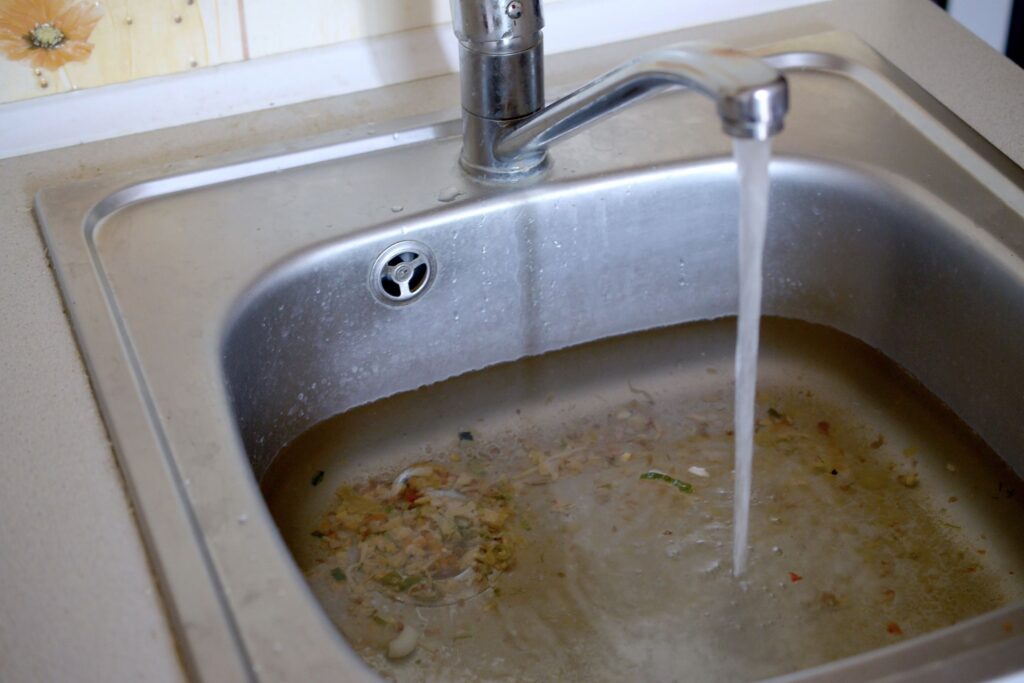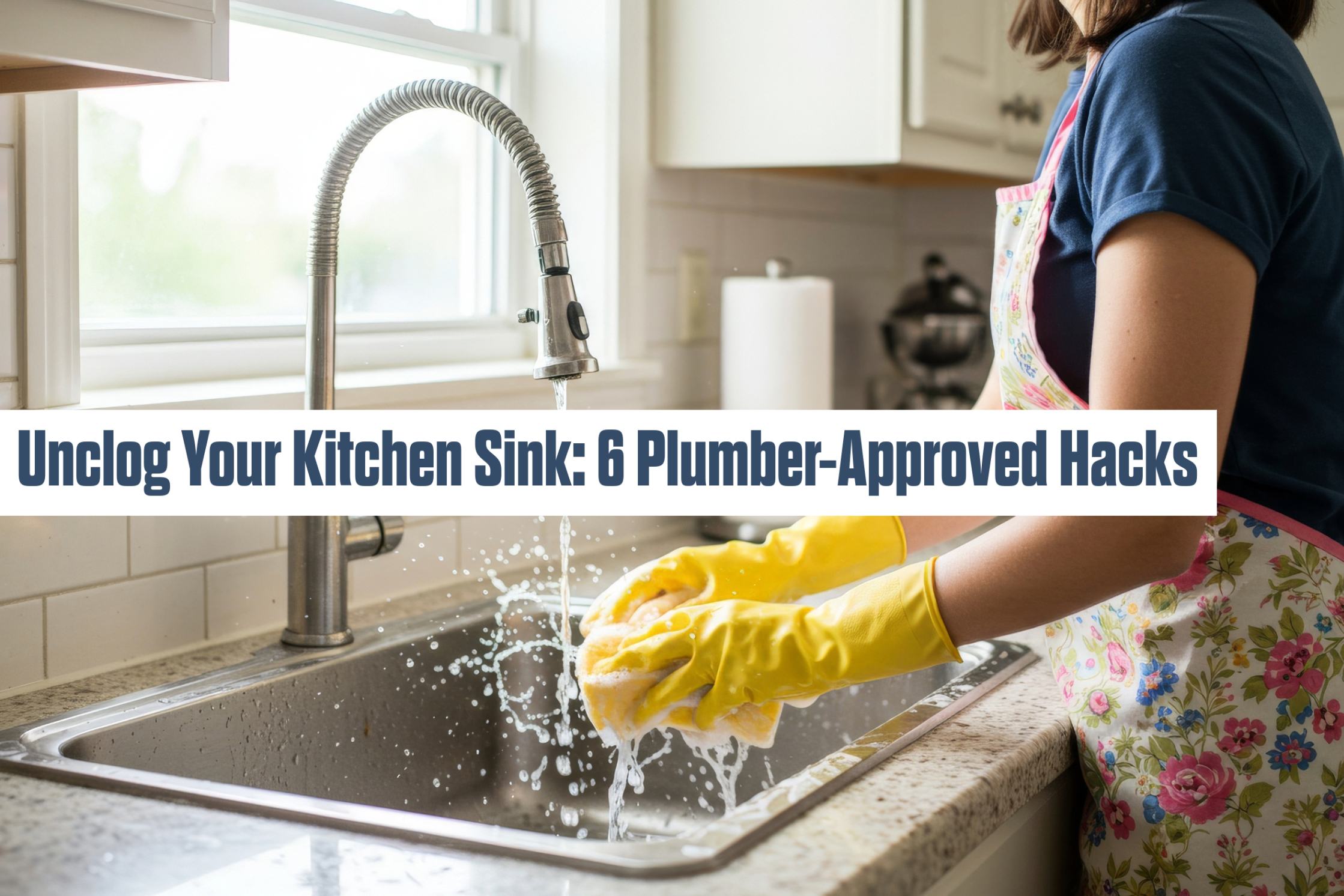Dealing with a clogged kitchen sink can be a real headache, interrupting meal prep and after-dinner clean-up. At New Albany Plumbing & Drain, we recognize the importance of a smoothly running kitchen. This guide will help you identify and address sink clogs using practical and effective methods.

Understanding the CulpritS Behind A Clogged kitchen SInk
To effectively tackle a clog, it’s crucial to know what typically causes them. Here are the main culprits:
– Accumulated food debris, specifically those high in starch such as pasta or rice, can lead to blockages over time.
– Hot grease or oil poured down the drain can cool and solidify into stubborn clogs.
– Soap scum combined with other materials can form blockages.
– Tiny objects like rings or plastic bits can accidentally fall into the sink and obstruct the drain.
The Five Steps to Get Your Kitchen Sink Unclogged
1. Boiling Water Approach
Boiling water can sometimes clear minor blockages:
– Bring a pot of water to a full boil.
– Carefully pour it down the drain in increments, allowing the heat to break down grease or debris.
– This technique is best for metal pipes; avoid using it on PVC pipes to prevent potential damage.
2. Baking Soda and Vinegar Solution
This eco-friendly remedy is highly effective:
– Begin with a cup of baking soda down the drain.
– Add a cup of white vinegar, which will fizz and bubble, indicating the reaction is working on the clog.
– Let the mixture rest for about 15 minutes before rinsing with hot water to clear out the residue.
3. Using a Plunger
A plunger is a simple tool for unclogging:
– Fill the sink with enough water to cover the plunger’s bell.
– Position the plunger over the drain and plunge vigorously several times.
– Test the water flow to see if the problem is resolved.
Advanced Methods
4. Plumber’s Snake Technique
A plumber’s snake can reach deep-seated clogs:
– Push the snake into the drain until you hit the obstruction.
– Turn the handle clockwise to break through the clog.
– Withdraw the snake and run water to ensure the drain is clear.
5. Cleaning the P-trap
The P-trap is a frequent culprit for clogs:
– Place a bucket beneath the trap to catch water or debris.
– Use pliers to loosen the slip nuts and remove the P-trap.
– Clean out any debris inside and rinse with warm water.
– Reassemble the trap and check for any leaks.

6. Garbage Disposal
Next up on your checklist: check the garbage disposal—this could be the hidden culprit.
– Turn the unit on to see if it helps clear the clog.
– If the disposal doesn’t run, look underneath the unit and press the small red reset button.
That quick fix often does the trick and gets things moving again.
Click here for more in-depth instructions on how to clean your garbage disposal.
Preventive Strategies for Proper Sink Maintenance
Avoiding future issues is as crucial as solving them:
– Dispose of grease in a container and throw it in the trash instead of pouring it down the drain.
– Install a drain strainer to catch food particles before they can cause problems.
– Use the baking soda and vinegar strategy regularly to keep drains clear.

Resolving a kitchen sink clog doesn’t have to be overwhelming. By understanding common causes, using plumber-approved fixes, and employing advanced techniques when needed, you can keep your kitchen running without a hitch. Routine maintenance can also greatly reduce the risk of future clogs. Here’s a list of our professional kitchen plumbing services.
New Albany Plumbing & Drain is committed to helping with all your plumbing needs. Whether it’s addressing a persistent clog or offering preventative advice, our experts are ready to assist. Use these DIY strategies to keep your kitchen hassle-free for cooking and cleaning.
Call New Albany Plumbing & Drain today at (614) 245-3319, or schedule an appointment online now by clicking here!



